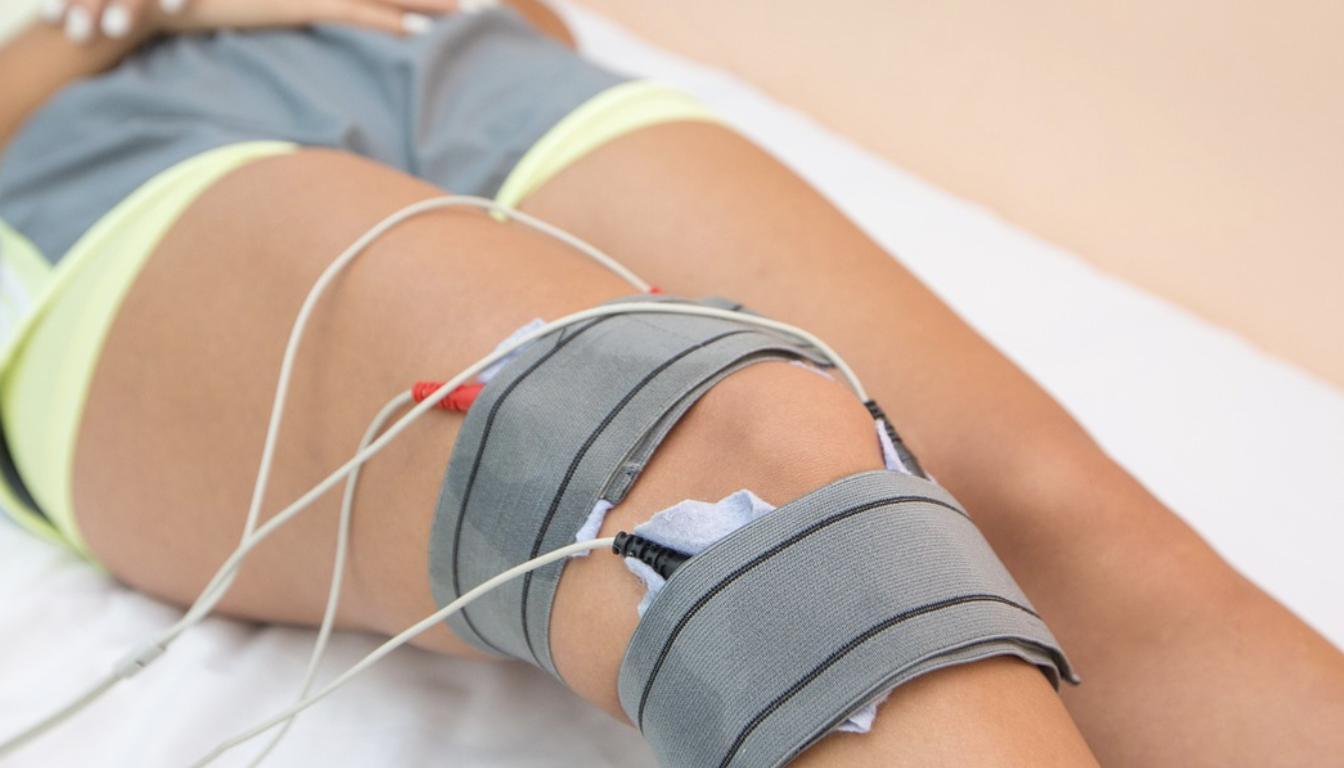
OPTIMAL TREATMENT WITH AXOMERA THERAPY
The Axomera-Therapy is an innovative method for targeted pain relief and healing promotion for acute and chronic complaints of the musculoskeletal system. It combines the latest findings from neurophysiology with proven principles of regeneration – completely without medication or surgery riffe. Even in orthopedic emergencies such as a torn cruciate ligament, a shoulder dislocation or a torn meniscus, the therapy can provide valuable support in the healing process.
- 1. What is Axomera therapy and how does it work?
- 2. How does Axomera therapy work in practice?
- 3. For which complaints can Axomera therapy be used?
- 4. What does the treatment involve in concrete terms?
- 5. What advantages does Axomera therapy offer compared to other methods?
- 6. What side effects can occur?
- 7. Who should not use Axomera therapy?
- 8. What does the aftercare look like?
1. What is Axomera therapy and how does it work?
Axomera therapy is a novel medical procedure for reducing pain and promoting the body’s own healing. It was developed by the Düsseldorf-based orthopedist and acupuncture researcher Professor Dr. med. habil. Albrecht Molsberger. The procedure is based on the application of weak electrical impulses, which are directed precisely and accurately via acupuncture needles into painful or damaged tissue. The method was named after the Mexican axolotl, which is able to completely regenerate lost body parts through electrical control processes. Similarly, Axomera therapy is intended to stimulate the natural regeneration processes in the human body.
The impulses that are applied during the treatment imitate the body’s own control mechanisms and are intended to activate the repair processes in the area of muscles, tendons, connective tissue and nerves. The aim is to regulate inflammatory processes, achieve rapid reduction of swelling of the inflammatory tissue, promote blood circulation and accelerate healing. The focus is not on suppressing the symptom of pain, but on specifically stimulating regenerative processes in the affected tissue.


2. How does Axomera therapy work in practice?
For the treatment, thin electrodes are used, which are inserted via fine probes such as acupuncture needles in the immediate vicinity of the affected body region. The placement is precise in order to focus the nerve conduction on the painful structures. The electrical impulses are delivered under computer control and correspond in frequency and intensity to the natural signals of the body. In this way, the cell reactions necessary for the healing process are to be set in motion. Axomera can be used universally for pain.
The treatment itself is usually low in pain. A therapy session lasts about 30 minutes. Depending on the clinical picture, three to six applications are planned. Many patients report a noticeable improvement in symptoms after just a few sessions.
3. For which complaints can Axomera therapy be used?
Axomera therapy is used in particular for the treatment of pain caused by muscular, tendinous or neural structures. It is used for acute and chronic sports injuries such as muscle fiber tears, tendon irritation or ligament strains. It can also promote healing in typical knee injuries such as a torn cruciate ligament, torn meniscus or dislocated kneecap.
In addition, the procedure is used for chronic pain syndromes, such as back pain, joint pain, muscle tension or tension headaches. Neuropathic pain, for example after a nerve injury or as part of diabetic polyneuropathy, is also part of the application spectrum. After surgical procedures, such as cruciate ligament surgery or shoulder dislocation surgery, Axomera therapy can also help to relieve postoperative pain and promote healing.
4. What does the treatment involve in concrete terms?
At the beginning of each treatment there is a detailed examination to clarify whether Axomera therapy is suitable in the specific case. The treating doctor analyzes the cause of the pain, identifies the affected structures and decides together with the patient which treatment options are possible.
Following the diagnosis, the exact location of the pain points is determined with the help of a special button. The electrodes (special acupuncture needles) are then navigated into the pain center. The needle electrodes are now connected to the control unit of the device system and a finely adjustable direct current is set to adapt to the symptoms. The electrical impulses are delivered for about 30 minutes. The electrical treatment is painless. Some patients only feel a slight tingling or warmth. The number of sessions depends on the individual healing process, but is usually no more than six applications, both for muscle fiber tears, ligament injuries, tendinitis or chronic pain.
5. What advantages does Axomera therapy offer compared to other methods?
A major advantage lies in the fact that Axomera therapy is a non-invasive procedure. Surgery is not required. The administration of medication, especially painkillers, can often be avoided. The method is characterized by a rapid effect with simultaneously few side effects. Since the therapy aims to activate the body’s own healing processes, the focus is on supporting natural regeneration – both for muscle and ligament injuries, or tendinitis.
Many patients report a significant pain relief and improved mobility after just a few sessions. Especially for chronic complaints, Axomera therapy offers a promising addition or alternative to conventional treatment methods.
6. What side effects can occur?
The treatment is generally considered to be well tolerated. In rare cases, there may be a slight reddening of the skin or a temporary tingling sensation at the treated area. These reactions usually disappear on their own within a short time. Serious side effects are not yet known, as no medication is administered and no invasive measures are carried out. We also observe isolated cases with a temporary increase in pain. Experience has shown that this is a prognostically favorable sign and has a direct impact on the following treatments.
7. Who should not Use Axomera Therapy?
Despite its good tolerability, Axomera-Therapy is not suitable for all patient groups. People with an implanted pacemaker or defibrillator should not be treated because the electrical impulses can impair the function of these devices. The therapy is also not approved for pregnant women. The therapy should also not be used for serious neurological diseases, especially those with an increased risk of seizures. In all cases of doubt, a careful medical examination is required.
8. What does the aftercare look like?
What should be considered during the first few days?
In the first few hours after Axomera therapy, the treated area should be rested and not overused. Intensive physical activity, such as sports or heavy physical work, should ideally be avoided for 24 hours. However, light everyday movements are permitted and can promote blood circulation.
Which movement exercises can be performed?
Light mobilization exercises that do not cause pain are usually beneficial shortly after treatment. They support blood circulation and promote the healing processes in the tissue. Intensive training or excessive stretching should initially be avoided—especially in the case of recent injuries or irritation. In case of doubt, the treating physician will provide specific movement recommendations, for example during the healing of a cruciate ligament tear or meniscus tear treatment.
